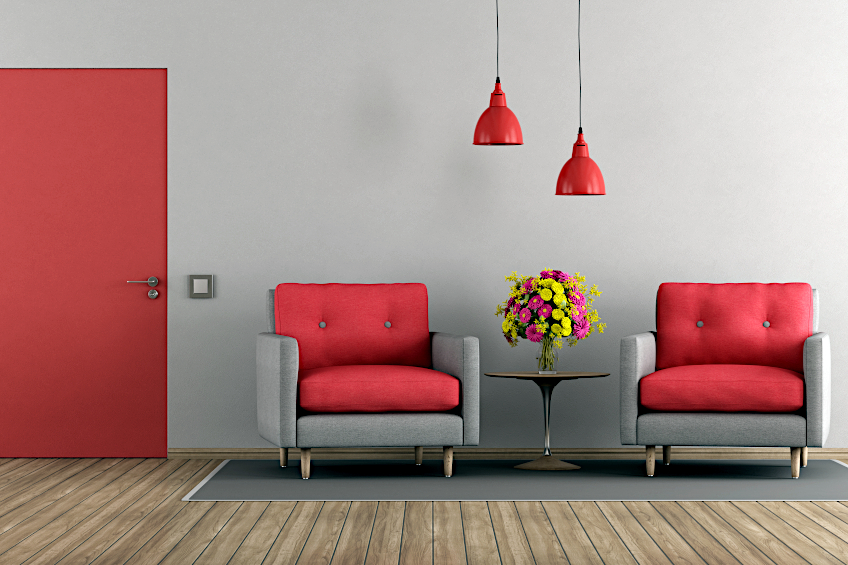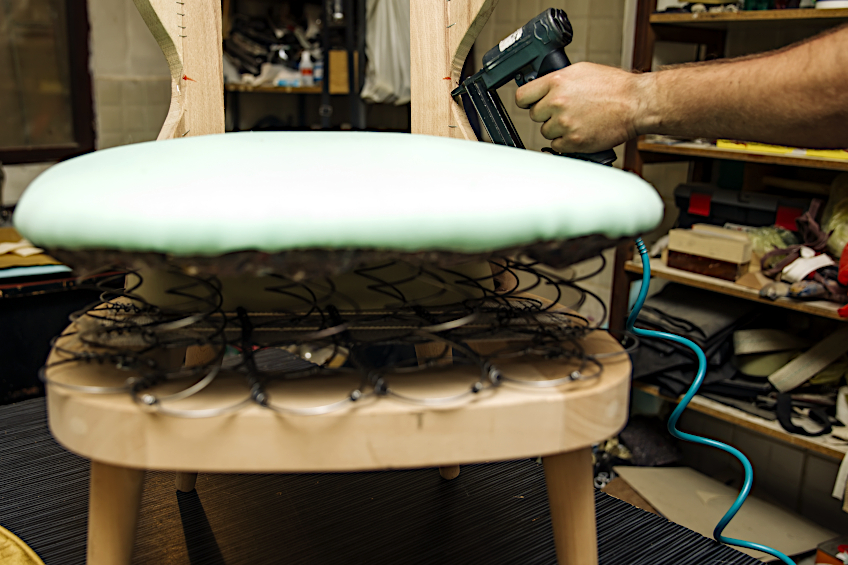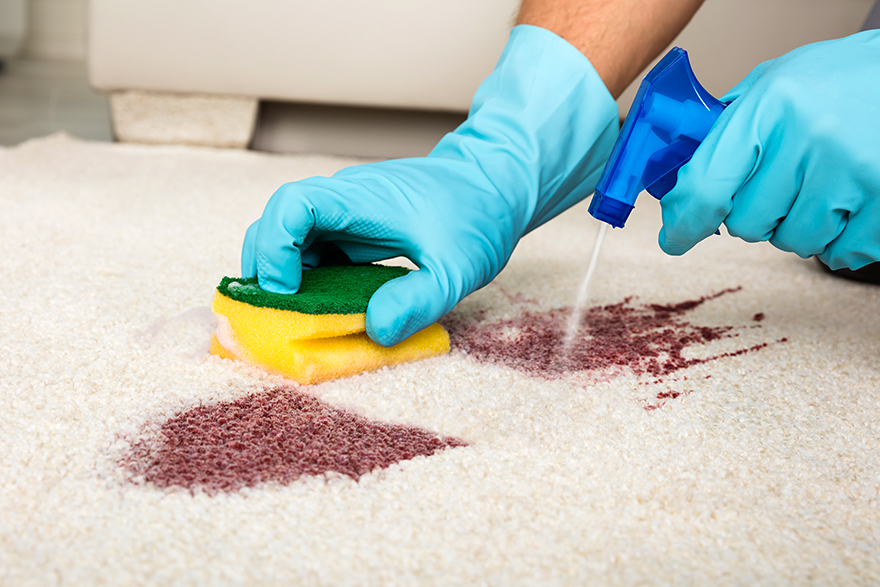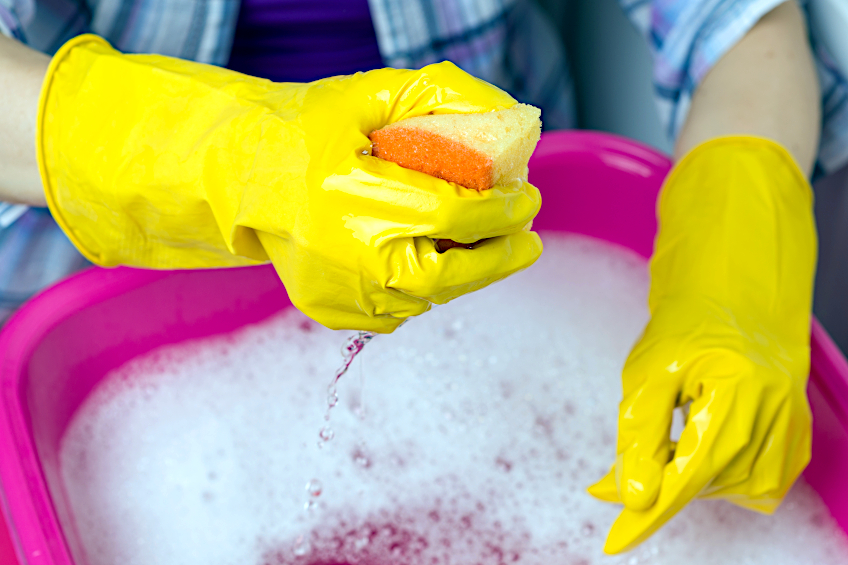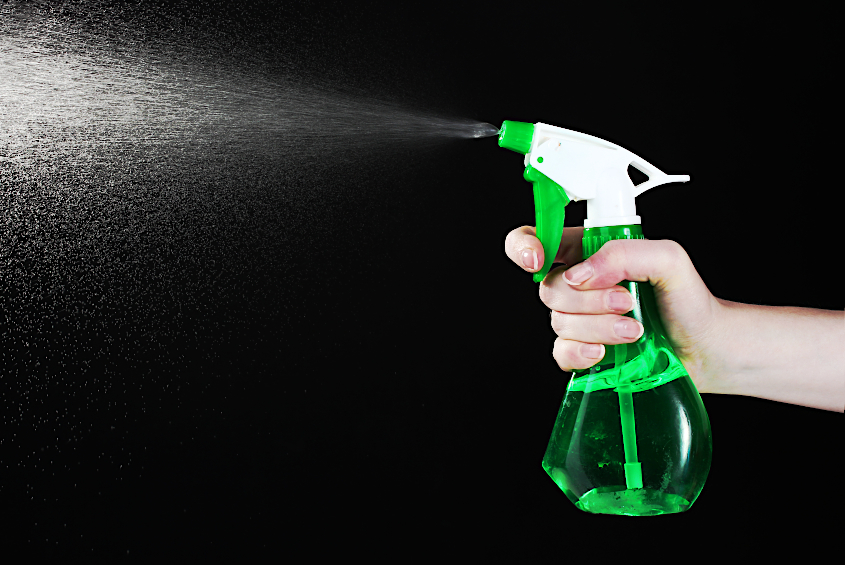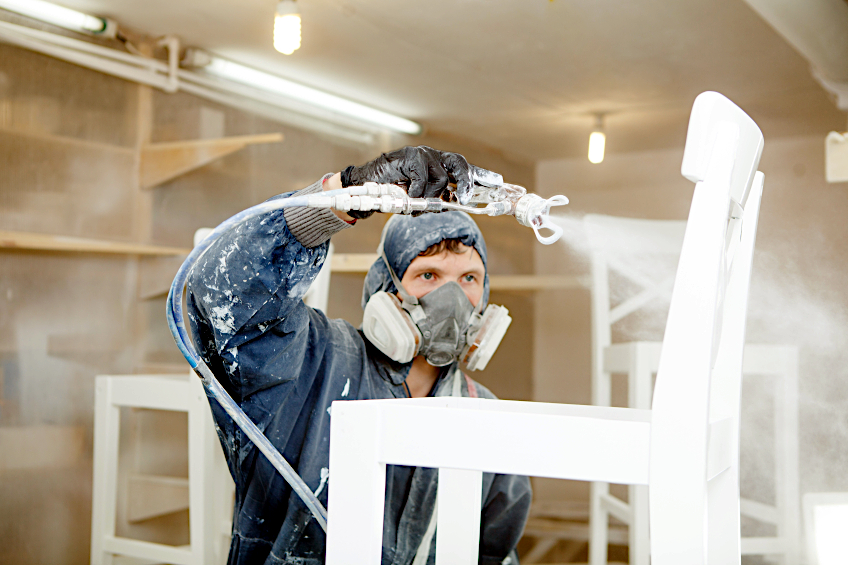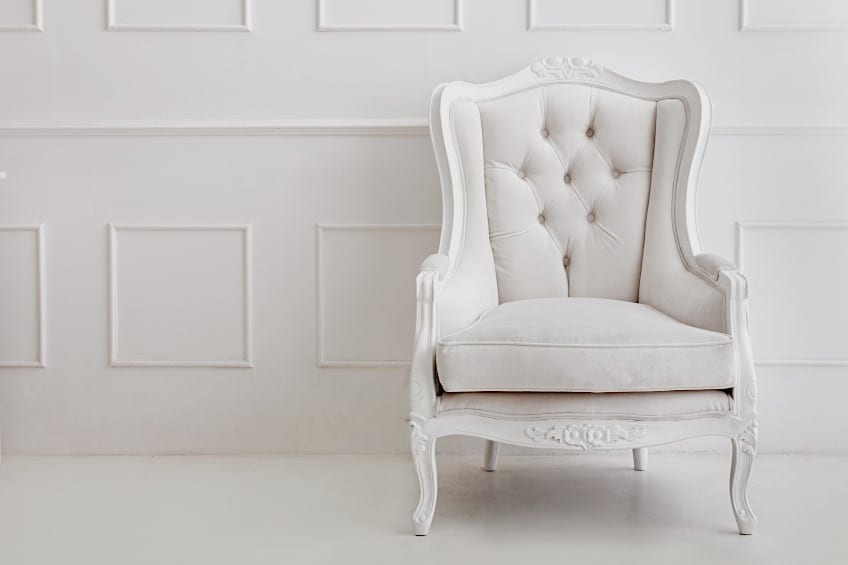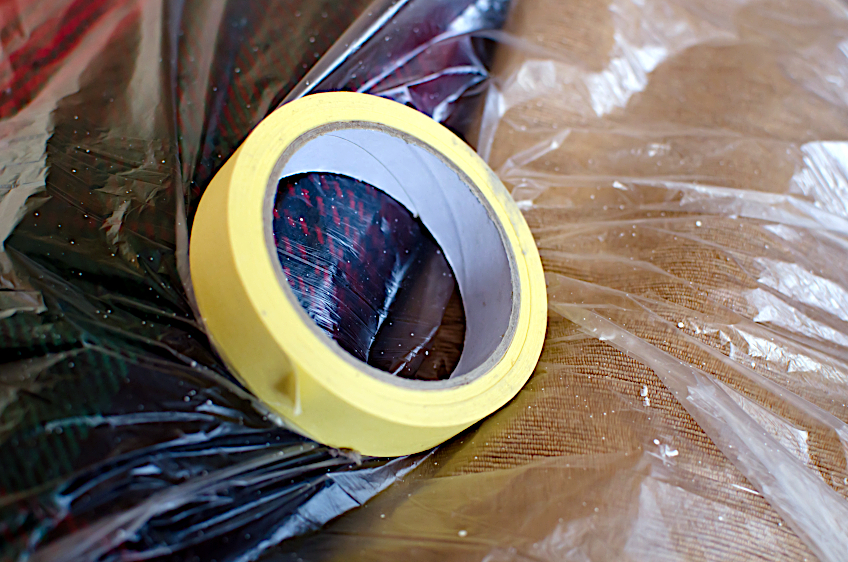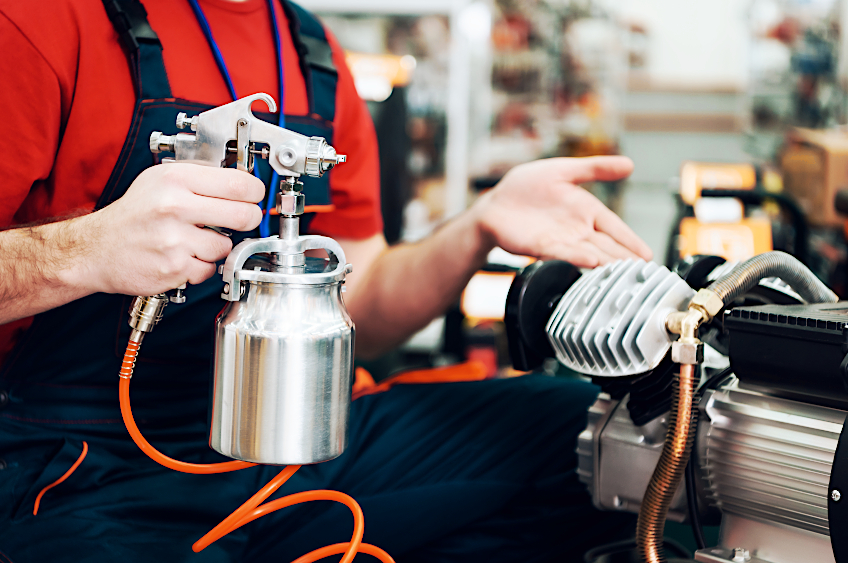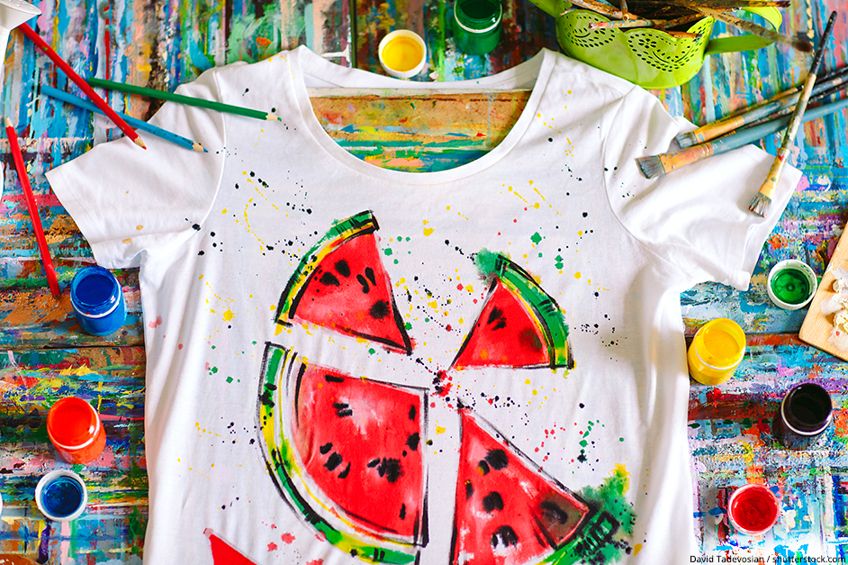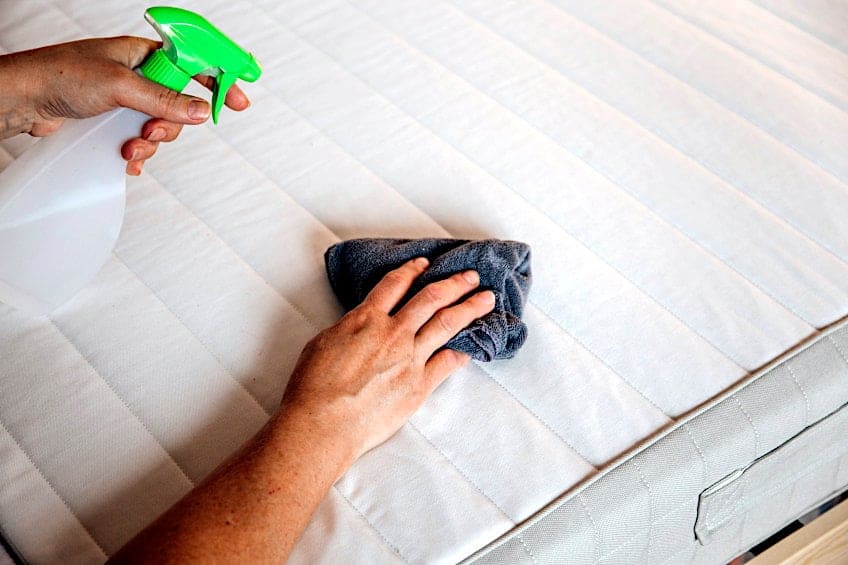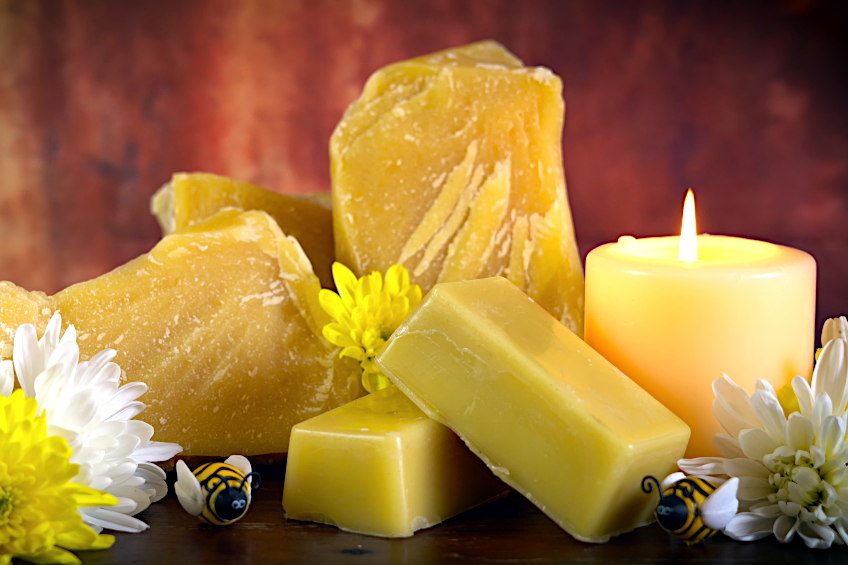How to Paint Upholstery – Fabric Furniture Painting Guide
This post may contain affiliate links. We may earn a small commission from purchases made through them, at no additional cost to you. You help to support resin-expert.com
Chances are that if you’re reading this, you have some outdated furnishings that could use some refreshing. While you could send your item away to a professional, this can be expensive, and it could take a really long time to get your furniture back. If your upholstery fabric is still in good condition, but it is the wrong color or print, you can paint your furniture to suit your new interior design. This process is not only highly beneficial to the longevity of your workpiece, but it is also far more cost-effective and less time-consuming than completely re-upholstering furniture. That being said, let’s have a look at how to paint upholstery, what upholstery paint is, and some of the techniques you can use to achieve the best finish.
Table of Contents
Why Should You Paint Your Upholstery?
Unless you regularly paint fabric the idea of doing so can be daunting. Why? Well, most of us are used to painting rigid materials like wood, masonry, or plastic. Fabric is soft, malleable, and squishy when wet. This could make you feel apprehensive about attempting to paint it, but there are many advantages to painting upholstery, especially when compared to replacing or having it done professionally.
It’s Faster
Before we get into how to paint upholstery, we thought we’d show you why it’s a good idea. One of the best reasons to paint your upholstery is that it’s a lot faster and much easier than recovering the surface or using a slipcover, which could potentially cause further damage to your workpiece. Additionally, you won’t have to pay for your workpiece to be couriered!
It’s Easier
Not only is it a lot faster to paint your upholstery but it’s also a lot easier. The alternative to painting would be to have your workpiece reupholstered, which can take considerably more time and money compared to painting. Keep in mind that should you choose to reupholster your furnishings, you’ll likely need specialized tools like fabric scissors, a nail/staple gun, measuring tape, and specialized stuffing.
It’s Easier to Clean
If you’ve ever tried to clean fabric then you know how challenging it can be. There are little grooves and recesses that dirt loves to get trapped in, making for a frustrating cleaning experience. Fabric (especially ones used to cover couches) tends to have high surface friction too, which makes it difficult to wipe, scrape, and brush. Using upholstery paint ensures significantly less surface friction, making it easier to wipe away stains, crumbs, and dust.
What Are the Downsides of Painting Upholstery?
While there are many reasons to paint your workpiece, there are also a few aspects of painted upholstery that could make you think twice. Here are a few things to consider before committing to painting an upholstered workpiece, as well as what could happen to your workpiece if it is painted incorrectly.
Not All Fabrics Can Be Painted
While painting upholstered furnishings is more cost-effective and requires significantly less elbow grease, not all fabrics can be painted. Why? The fibers (or general materials) used on some furnishings simply will not absorb the type of paint used to coat them or will do so poorly, resulting in an undesirable finish.
Painted Upholstery Can Feel Strange
Whether you’re spray-painting fabric chairs or have other fabrics that you’d like to paint, you should consider the application of said fabric. If you’re looking to maintain the texture and contours of the fabric in question, painting it could cover it up. It can also make surfaces designed to be sat on slippery and generally uncomfortable depending on the type of paint used and the type of fabric being painted.
Paint Can Be Challenging to Remove
While painting fabric chairs might seem like a fun idea initially, you should take some time to consider whether the color you’ve chosen will age well, or if you’ll even like a painted look and feel in a month or two. Why? Painting upholstered furniture is fairly permanent, as removing fabric paint usually can only be done with a special solvent and a lot of elbow grease.
Preparing Your Upholstery for Painting
Painting upholstery can be a fun and satisfying way to update the look and feel of your furnishings. However, if your workpiece is prepared incorrectly, the overall finish of your painted fabric can become blotchy and/or runny. That being said, let’s have a look at how to properly prepare your workpiece when painting upholstery.
Clean Your Upholstery Thoroughly
When applying paint to virtually any surface, it’s always best to ensure that the surface has been thoroughly cleaned before attempting to prime or paint it. Upholstery is no exception, as the cleaner your workpiece is, the better paint and primer tend to adhere. Before you get started, ensure that the surface of your upholstery can be cleaned conventionally.
Before you get to scrubbing it’s a good idea to give the surface a once-over with a clean cloth. This will remove most of the loose particles from the upholstered surface, which tends to be the bulk of the work in most instances. Once the bulk of the loose particles has been removed it’s time for you to tackle some of the more stubborn dirt.
This is where the vacuum cleaner comes into play. Using the vacuum cleaner, do your best to get into the little nooks of the furniture and ensure that any little particles of dust and sand are removed, not forgetting the seams where dirt tends to gather over time. This should be done anywhere that you intend to apply primer and paint later.
Once you’re happy with the job you’ve done vacuuming the surface it’s time to give it a good scrubbing. Upholstery cleaner is available in a variety of forms including waterless foam and conventional cleaning varieties. Simply apply the cleaner to the surface of your workpiece (either directly or by using a cloth) and use a sponge to give it a good scrubbing.
Once you’ve deep-cleaned the surface of your upholstery, allow it to dry completely before moving on to the next step in the process. Finally, ensure that all of the surfaces you’ll be painting are free of holes by sewing/stitching the surface to your liking so that no paint or primer will leak through into your stuffing.
Prepare Your Upholstery to Be Painted
Now that your surfaces are nice and clean it’s time to prepare them for the painting process. Preparing upholstery can be a bit different compared to materials like wood and metal due not only to its porosity, but also its flexibility and high rate of absorption. That being said, how do you prepare upholstery for painting?
It’s quite simple actually. There are two ways to go about it, the spray bottle method or the tried and true primer method. The former involves using a spray bottle to lightly wet the surface of your workpiece and then applying your paint using a paint spray and brush as usual. The latter involves applying a fabric primer to the surface of your workpiece, allowing it to dry completely, and then applying your paint using a sprayer.
Using Water
If you’re going to be using water alone, the idea is to “open up” the material of your workpiece to allow the paint to seep in easily. This works well if you’re using water-based paint as it will allow the paint to bond with the material of your workpiece quickly, and it will likely dry pretty quickly too. On the other hand, depending on the type, quality, and quantity of paint being used, it could result in over-absorption of the paint, making for a faded, patchy look.
If your project is time sensitive, or if you simply don’t want to use primer, this method is ideal. Using a spray bottle, wet the surface of your upholstered surface and allow the water to absorb the material. Spray all the surfaces you intend to paint and ensure that water is applied evenly. Ensure that any surfaces you won’t be painting are covered with some painter’s tape beforehand.
Using Primer
Painting upholstery with primer is the sure-fire way to go when it comes to painting upholstery. Why? When painting virtually any surface, primer not only ensures your paint will adhere to the surface of your workpiece, but it also doubles as a sort of “base coat” ensuring that the fabric doesn’t absorb the paint unevenly.
Before you apply your primer ensure that any surface that you shouldn’t receive paint on is covered with some painter’s tape. Next, prepare your primer by ensuring to give the container a good shake. This ensures that all the heavier particles at the bottom of the can are reintroduced into the mixture. Next, open your primer and pour some out into your spray gun.
Once your sprayer has been loaded, it’s time to apply your primer. Start by spraying off your workpiece and then moving your wrists in one smooth, uninterrupted motion across the surface. Ensure that your trigger pressure is even throughout the motion to guarantee comprehensive coverage.
Repeat this process until all areas you intend to paint are covered, using a brush to reach areas your sprayer could not. Finally, allow the primer to dry and cure for the manufacturer’s recommended time period before moving on to the next step in the process.
Choosing the Right Paint for Your Upholstery
Before we get into how to paint fabric furniture we thought you’d like to know what types of paint work on the upholstery, to begin with. As we mentioned previously this depends on the type of material you’re working with and the type of finish, color, and texture you’d like to achieve. That being said, here are some of the paints you could use to paint your fabric furniture.
Chalk-Based Paint
Chalk-based paint is fairly new compared to more commonly used paint types like oil and acrylic-based paint types. That being said, why is chalk-based paint a good choice for painting fabric? Put simply, when diluted, chalk-based paint bonds well with materials like fabric, seeping deep into the fibers and creating a lasting coat and color.
You should ensure that the type of fabric you have chosen works with chalk-based paint. What types of fabric can be used with chalk-based paint you ask? Generally speaking, most linen, silks, and cotton blend fabrics are capable of absorbing chalk-based paint. To be sure (and to avoid ruining your workpiece) we recommend testing your paint on some spare material beforehand.
Fabric Paint/Acrylic Paint
Fabric paint would be the obvious choice when working with fabrics. After all, why wouldn’t you use a product dedicated to the application? Fabric paints are essentially acrylic-based, allowing them to seep into the material of upholstered furniture to form a strong bond. Fabric paints are typically available in a range of bright, intense colors to suit most material painting applications.
Painting fabric furniture with acrylic-based fabric paint is a good idea because of how acrylic paint interacts with these materials. Acrylic paint is essentially pigment that has been suspended in an acrylic polymer, often with solvent added to the mixture. Once the paint is applied and the solvent dissolves, the polymer bonds with the fabric, allowing the pigment to stain the fibers.
What You Will Need When Painting Upholstered Furniture
If you’ve never painted upholstered furniture before, it can be a daunting task. However, as long as you’re prepared everything should go pretty smoothly. What do you need when painting upholstered furniture then? For your convenience, below is a list of things that you might find useful when spraying painting fabric chairs or any other upholstered workpiece.
A Set of Clean Cloths
A set of clean clothes can go a long way when cleaning upholstered furniture. They can be used to both spread paint and clean up any excess paint that has spilled or run. We recommend any clean clothes, whether they be of the microfiber variety or not. Keep these on hand at all times, as you never know when you’ll need them throughout the application process.
A Drop Cloth/Some Old Newspaper
While we have covered preparing your workpiece, we recommend preparing your workspace as well. Paint, especially when being sprayed in close quarters, tends to get everywhere. Laying down a drop cloth or some old newspaper goes a long way in protecting your workspace and belongings from stray paint particles. For good measure, we recommend securing your drop cloths with some painter’s tape.
A Paint Sprayer and Brush
While you could use a brush or roller to paint your upholstered workpiece, the results tend to be less impressive when compared to using a paint sprayer. That doesn’t mean that a brush is useless when painting upholstery, in fact, it is commonly used to reach areas where the sprayer is unable to. What kind of sprayer and brush is recommended for painting upholstery?
When spray painting fabric chairs, any light-duty electric sprayer with a standard-size hopper should get the job done. As for the configuration, gravity-fed hoppers might hamper your painting experience, especially if you’ll be spraying upside down. Although, you could simply use a sturdy small brush to tackle these areas should you not have a force-fed paint hopper attached.
Sandpaper
A big part of painting upholstery is ensuring that the look and feel of your final coat are good. This is where sandpaper comes in, as just when painting wooden workpieces your initial coat generally needs to be sanded down before the final coat is applied. You’ll be using really fine grit sandpaper, roughly 120 grit and above.
A Spray Bottle for Water (Optional)
A spray bottle is a largely overlooked and highly versatile tool for a number of applications. In this instance, you can use a spray bottle filled with water to lightly wet the surface of your upholstered workpiece, enabling it to absorb paint more efficiently. This method is ideal if the nature of your project is time sensitive.
An Upholstery Primer (Optional)
As we mentioned previously, there are two generally accepted methods of preparing upholstery for painting. While the spray bottle method might work well with less viscous paint, using an upholstery primer provides an objectively superior finish. Upholstery primer can be found at virtually any hardware/ upholstery store.
A Paint of Your Choice
Choosing paint for your workpiece can be challenging. After all, there are so many cool colors to choose from! We recommend going with a dedicated fabric paint, or an acrylic-latex variety depending on the preparation method you intend on using. Regardless of what paint type you choose, it’s a good idea to test both your paint and primer out on some spare material beforehand.
How to Paint Fabric Chairs
While this tutorial does detail how to paint fabric chairs, this method can be used to paint virtually any upholstered workpiece you come across. As we mentioned previously, to avoid disappointment (and ruining your workpiece) we recommend that you try out both your paint and primer on some spare material before tackling your actual workpiece.
Prepare Your Workspace
Preparing your workspace is one of the most important parts of painting pretty much any surface. Preparing a workspace to paint upholstered furniture can be a bit more challenging as the chances are that you won’t have the furnishing on a workbench. That being said, the best thing to do is lay down a tarp or some old newspaper in the area you’ll be painting.
Ensure that you and the surrounding area are protected as well. For personal protection, we recommend wearing some gloves and a face mask to ensure that you don’t inhale any aerosolized particles while you work. Finally, check that your workspace has adequate airflow to ensure that paint fumes don’t become trapped in your immediate vicinity.
Clean Your Workpiece
As we mentioned previously, cleaning your workpiece is extremely important. A dirty workpiece will cause your paint to adhere poorly, ruining your finish. The best way to go about cleaning your workpiece is to wipe off any loose dirt and grime with a clean cloth. Once the majority of your workpiece has been cleaned, get into those small nooks using a vacuum cleaner.
There are more intense methods of cleaning you could use too. Stores tend to sell carpet/furniture cleaner, so if there are particularly stubborn stains you’d like to get rid of, these can simply be applied to your upholstery and scrubbed in. Just ensure that the type of cleaner you’ve purchased is graded for use in the type of material you’re working with.
Prime Your Workpiece
When it comes to priming upholstery there are two schools of thought. The first is to simply wet the surface of the upholstery and then apply the paint. The second is to apply a primer, allow it to set, and then apply your paint. Both methods have pros and cons associated with them and are best suited for certain paint types.
Using Water
Using a spray bottle filled with water is priming in a functional sense, but it will not have the same effect that actual paint primer does. This method is fairly self-explanatory, all that you need to do is spray the surface of your upholstered workpiece with water until it becomes damp. Do not allow the workpiece to become dry before your paint has been applied.
The science behind this is pretty straightforward. In most instances, acrylic or acrylic latex-based paints are used to paint upholstery. Since these paints tend to have water in the composition, the water present on the upholstery’s surface aids in the absorption of the paint, ensuring even absorption. The downside of this technique is that it isn’t universally effective with all materials.
Using Primer
Using a dedicated primer product for your paint type is generally more effective compared to using water. Primer is simple to use, all that you need to do is give the container a good shake, pour some into your paint sprayer, and start applying it to your workpiece. Start by spraying off the workpiece and then move your wrist in one smooth, uninterrupted motion across the surface of your workpiece, applying even trigger pressure throughout the movement.
Primer is a great way to ensure an even, vibrant color across the surface of your workpiece. It creates a layer on the surface of your workpiece that not only increases surface friction but also ensures that the material you’re painting won’t over-absorb the paint in certain areas. Primer is arguably the easiest way to ensure an even and rich finish.
Paint Your Workpiece
Now for the moment, you’ve been waiting for! Painting your workpiece is simple and can be done pretty much the same way that priming is done. Once you’ve allowed your primer to dry for the manufacturer’s recommended time period it’s time for you to apply your paint. Give the container a good shake to ensure that the heavier particles are reintroduced back into the mixture.
Next, pour some paint into your sprayer. Start by spraying off your workpiece and move your wrist in one smooth, uninterrupted motion across the surface of your upholstery. Focus on the larger surfaces, working your way from one end to the other with consistent trigger pressure. Repeat this process until the entire workpiece has been covered.
Once you’re done, allow the workpiece to dry for the manufacturer’s recommended time period. If you aren’t satisfied with the color, we recommend lightly sanding the surface and applying another coat, and then allowing it to dry completely. Use your paintbrush to fill in the gaps the paint sprayer might have not reached at this time.
Once you’re happy with the job you’ve done painting, give the paint a full 12 to 24 hours to dry and cure (or simply follow the manufacturer’s recommended drying time).
Seal Your Workpiece (Optional)
While this part is optional it is also recommended. Depending on your preference, you can either use some sandpaper to lightly burnish your workpiece’s surface, or you could apply a sealer. Why do we recommend applying a sealer? Well, if your furnishings are going to be used often, the traffic could cause your paint to wear down quite easily (and ruin some clothing)
Sealing your workpiece using clear wax or dedicated fabric sealer is objectively superior, as it will ensure that your paint and finish are preserved for years to come. All that you need to do is give the sealer a good shake, pour some into your sprayer, and apply it to your workpiece much the same way you did with the paint and primer. Ensure that primer is allowed to cure in a well-ventilated area for the manufacturer’s recommended time period before you make use of your furniture.
Now that you know why painting upholstery is a good idea, what type of paint to use, how to apply the paint, and how to go about the process, it’s time for you to get out there and put your newfound knowledge to the test! Remember to always wear the appropriate personal protective gear when working with aerosolized particles.
Frequently Asked Questions
Can You Paint Couches?
While most of us would simply get our couches recovered the moment their color or pattern goes out of style, others prefer a more artistic approach. Can you paint couches? Yes! If the fabric is not torn or threadbare, then couches can be painted with acrylic, acrylic-latex, and fabric paints if they have been prepared correctly.
Can You Spray Paint Upholstery?
While we know that upholstery can be sealed and even printed on, this might not be up your alley if you’re looking for more color. Can you spray paint upholstery then? Yes! Upholstery can indeed be spray painted, provided that the workpiece had been adequately prepared and cleaned.
What Type of Paint Works on Upholstery?
While most types of upholstery come dyed straight from the manufacturer, it might not be to your liking. If you’re looking to paint upholstery, it can be done with acrylic, acrylic-latex, and fabric paints. Alternatively, you could also use a fabric dye to change the color of your workpiece.
Can You Modify Painted Furniture?
Yes, you can. There are a number of ways you can go about customizing a painted chair or couch. You can apply stencils, use prefabricated inlays, custom sewing, or even apply acrylic resin if you’re looking for an entirely unique design.


